| We caught a proper bus from our campsite to Morelia.
It is about 50km, took about an hour and cost us 37 pesos each, each way
(<£2). The buses run about every 15 mins. They take you to the bus terminal
which is actually on the ring road about 5km out of the city centre. Then
you get a combi bus for 5 pesos to take you into the city centre. This is
the cathedral at the very heart of the Centro Histórico. | 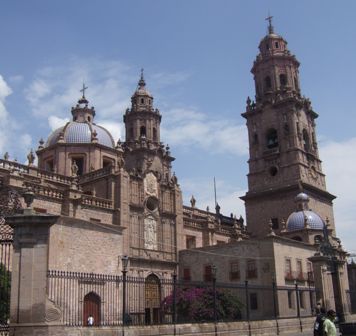 |
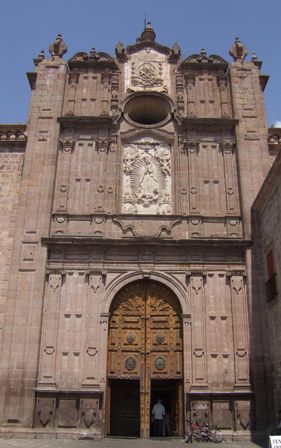 |
It was started in 1660 and completed in 1774. It was built with a rose
coloured quarry stone and models baroque panelling. The interior is Doric
styled with neoclassical relief carvings. |
| The detail in these panels is still very clear and
suggests that the atmospheric damage is much less here than in the much
wetter climate of Europe. | 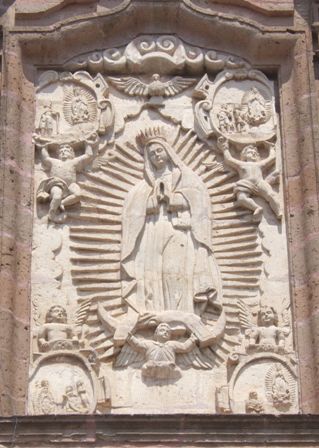 |
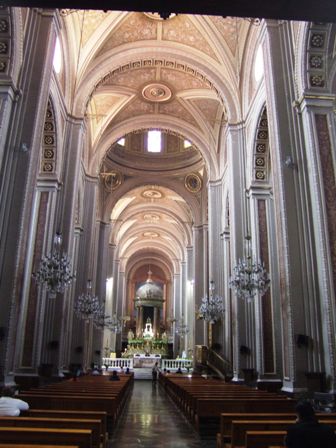 |
The interior is quite imposing with lofty towers and indicates that some
very fine engineering skills went into its construction. |
| The showcase altar is one of the most impressive that
we have seen and there are fine murals painted behind. This is an art form
for which the Mexicans are justly famed. The 16th century Lord of the
Sacristy that is made from maize paste. This was common in Mexico and they
have stood the test of time well. | 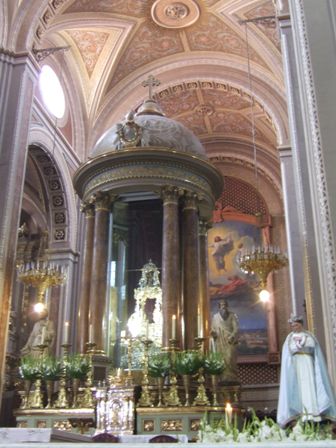 |
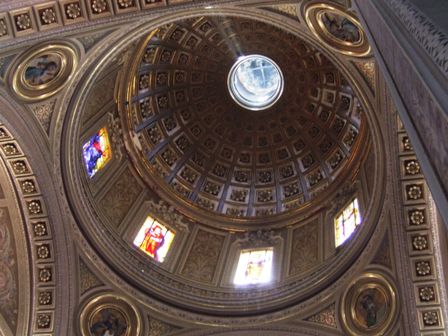 |
Many of the larger churches feature towering domes but few as richly
ornamented as this one. |
| The 4600 pipe organ is a relatively recent addition
from early in the 20th century. | 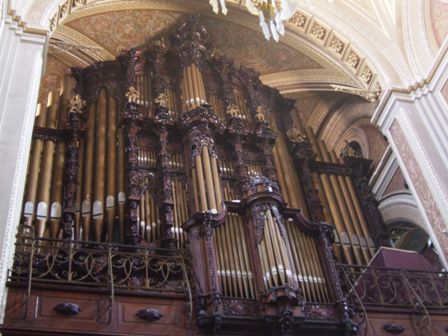 |
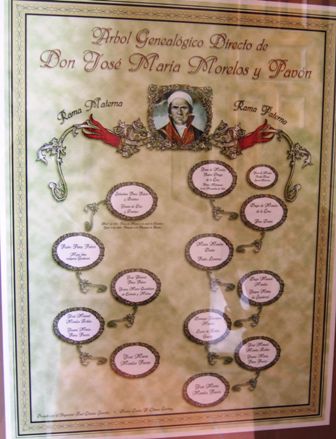 |
Our next port of call was the Casa Natal de Morelos which is a beautiful
baroque styled house on the site where Jose Maria Morelos y Pavón
was born in 1765. He was one of the heroes of the Mexican Independence
struggles and the house is a museum to his memory. The original house was
demolished in 1888. This building is late 19th century. We were struck by
the family tree where the female line is on the left - the opposite way to
the layouts we are used to seeing. |
| The Mexicans were very keen on shooting people. Most
of the early opponents of the government were eventually shot, along with
many generals. | 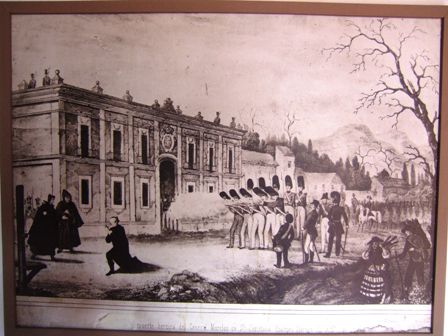 |
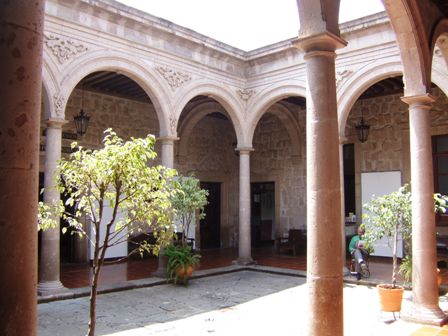 |
Like so many Mexican buildings, it is built around a central courtyard with
the beauty facing in. The outside is quite plain and often looks unkempt. |
| However the outside of some buildings can look very
smart - especially when it is something to do with the government. | 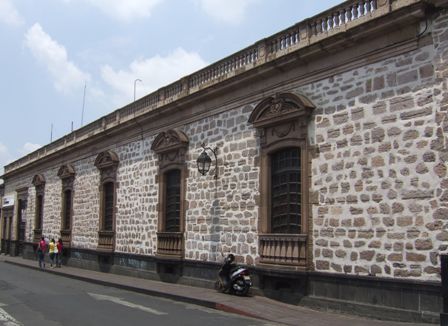 |
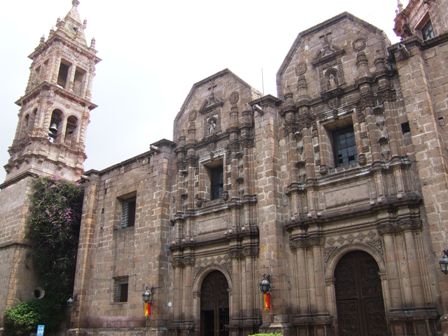 |
The Templo de Las Monjas (the nuns) was built in the 18th century to replace
a Dominican convent for the nuns of Las Rosas. In those days Morelia was
known as Valladolid. The statues above the doorways are Ste Catherine and St
Dominic. It was built between 1729 and 1737. |
| Next door is another magnificent edifice which is the
Palacio Federal. The style is very French. It was built about the same time
as the building above and for a while was used by the nuns. Later it housed
the Theresian school of Santa Maria de Guadalupe. It became Federal
government offices in 1935. | 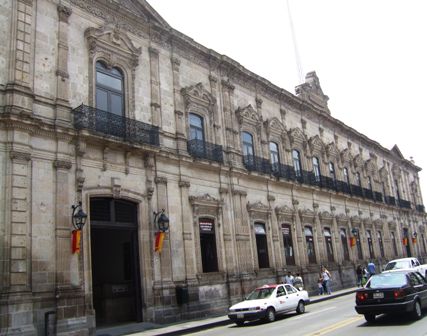 |
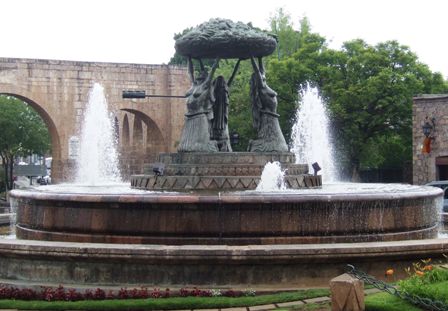 |
This is the Tarascan fountain and portrays three indigenous women holding a
huge tray of regional fruit. It has become one of the most representative
monuments of the city. |
| But the main symbol of the city is the acqueduct.
Bishop Friar Antonio de San Miguel ordered its construction in 1785. It
brought potable water into the city and provided work for indigenous labour.
It has 253 arches. | 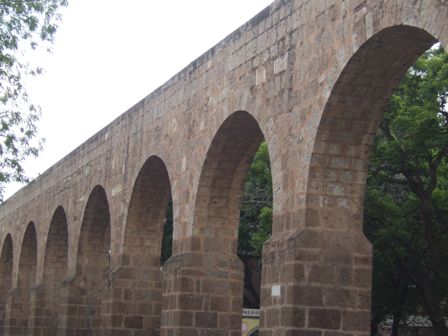 |
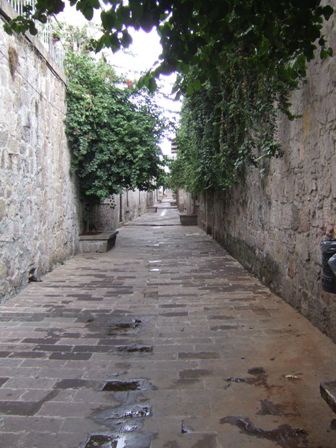 |
This quiet side street is called Romance Lane. Originally it was a lot more
important and a lot less pleasant. There used to be a soap factory at the
entrance and the houses were for the workers. When the factory closed the
houses were abandoned until the early 20th century when the government
bought them and rented them to individuals who later bought them. Now, since
it was renovated and renamed in 1965, it has become quite fashionable |
| Most archways into houses have large closed wooden
doors. But sometimes they are open and there is an ornate ironwork gate
behind. Peer through that and you could find almost anything - like this
horseless carriage which looks as though it may be for sale. | 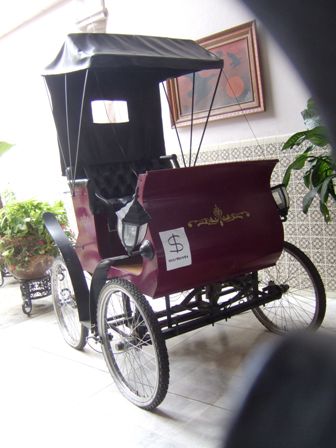 |
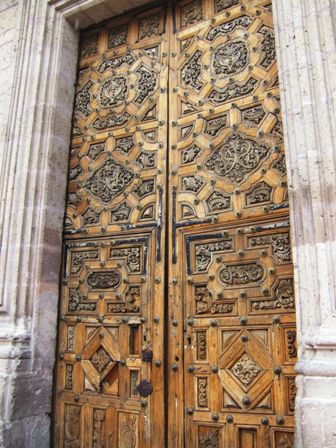 |
Many of the doors, particularly to the religious buildings, can be works of
art in their own right. Perhaps I should create a 'Doorways of Mexico'
poster. |
| Another view of the Cathedral as we pass back along
the main street. There are tree lined parks both in front of and behind this
central focal point of the city. | 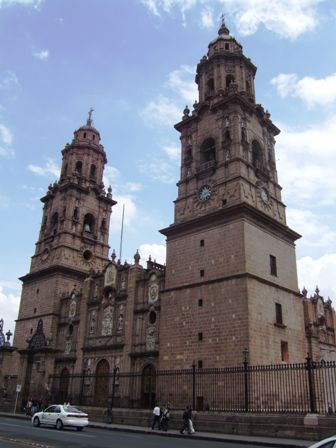 |
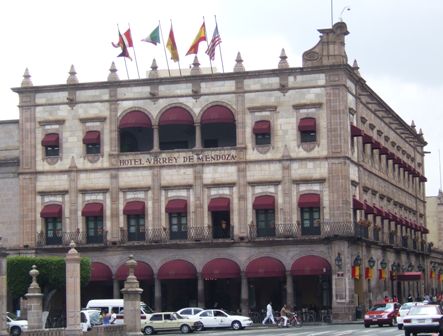 |
To the east is the impressive edifice of the Hotel Virrey de Mendoza.
Definitely 5 star and probably a bit above that. A suite here sets you back
around 4,000 pesos a night (about £200). |
| We moved quickly on to the University area and the
Colegio de San Nicholás de Hidalgo.
Founded in the 16th century by Vasco de Quiroga in Pátzcuaro,
it had campuses in many cities in Mexico and eventually became the
University of Mexico and one of the oldest educational establishments in the
world. The statue is of Porfirio Diaz who was President of Mexico around
1887. | 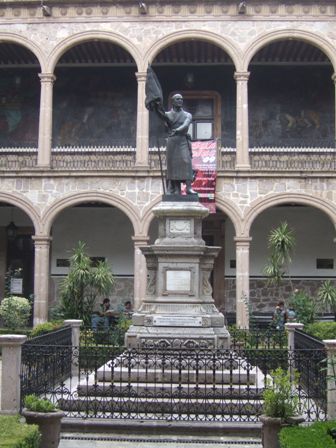 |
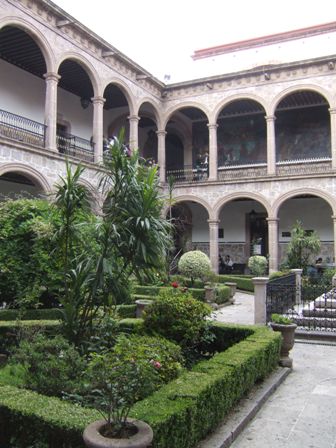 |
But the courtyard creates an area of peace and encourages study. Although
the students all around were noisy enough. Many of Mexico's rebels such as
Morelos, Hidalgo and Ocampo studied here. Michoacán's
ex-governor, Melchor Ocampo's papers were donated to the school just
before he was shot in 1861. |
|